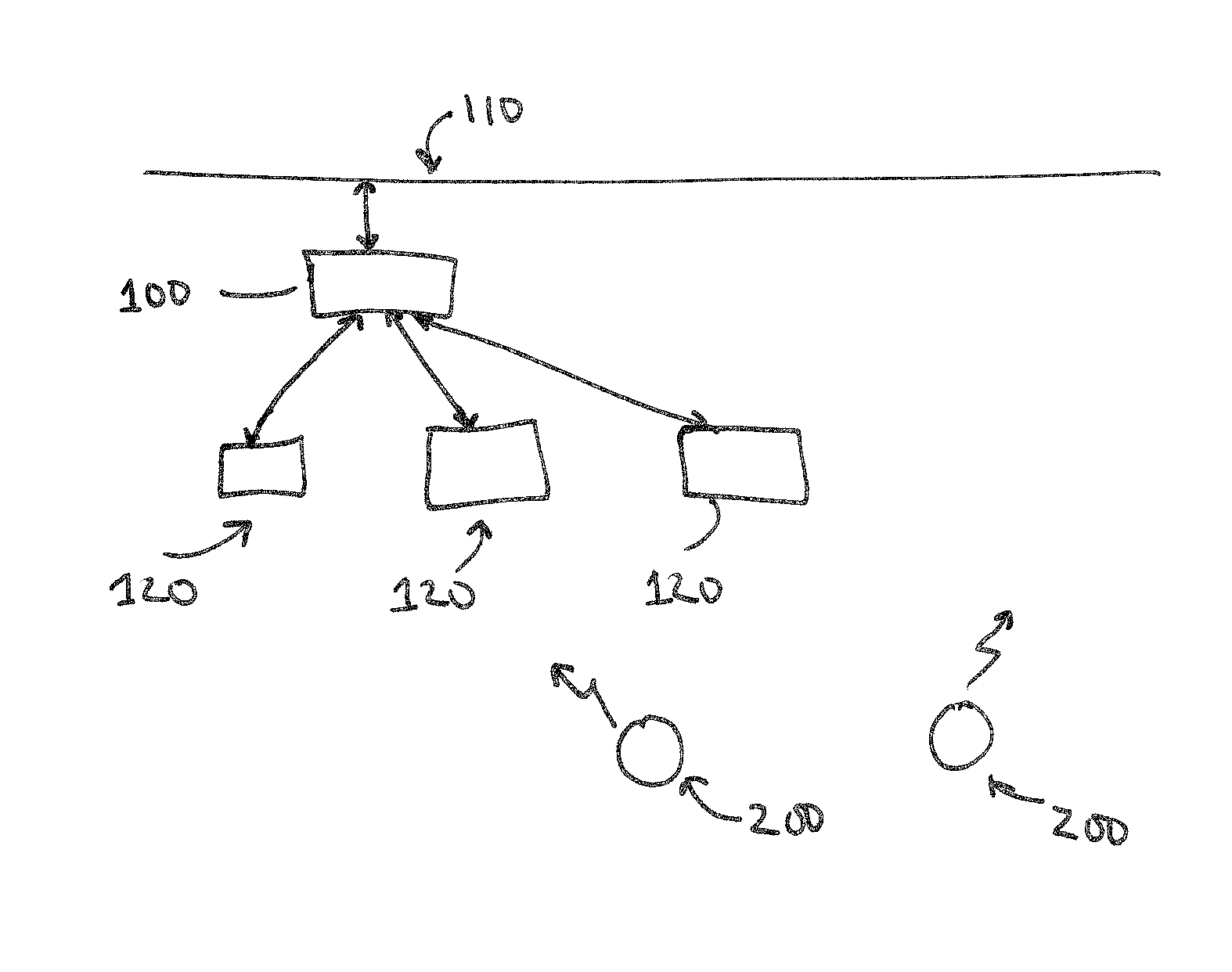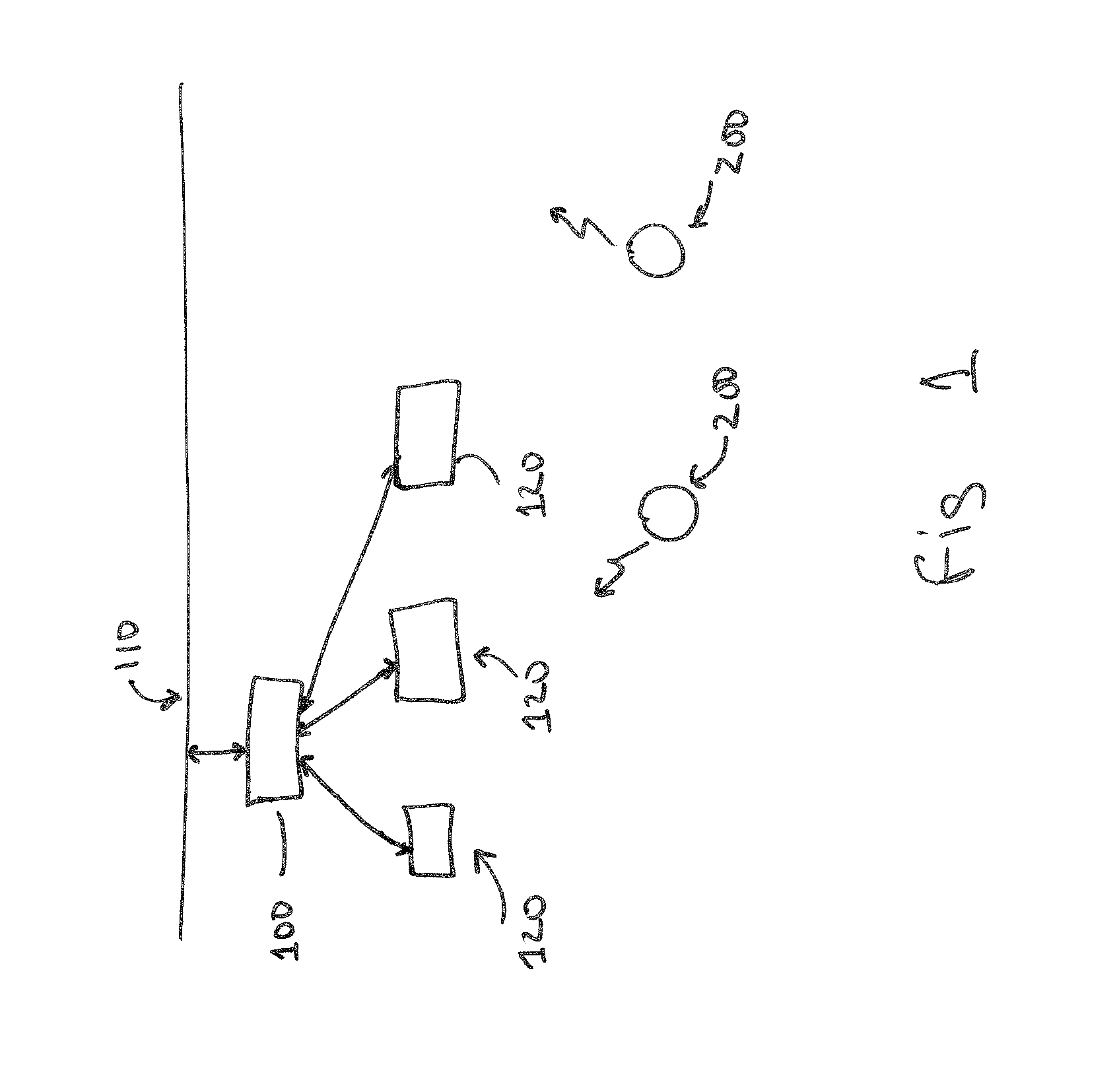Interference Classification with Minimal or Incomplete Information
a technology of incomplete information and interference classification, applied in the field of wireless networks, can solve problems such as the inability to achieve the same simple process
- Summary
- Abstract
- Description
- Claims
- Application Information
AI Technical Summary
Problems solved by technology
Method used
Image
Examples
Embodiment Construction
[0011]Embodiments of the invention relate to methods of classifying interference to a digital network. While the invention is described herein in terms of IEEE 802.11 wireless networks, the techniques are equally applicable to other digital systems and networks including but not limited to WiMAX, Bluetooth, and 3G / 4G.
[0012]According to the invention, wireless receivers such as access points and clients on a wireless digital network may be switched to a spectrum monitor mode in which they provide amplitude-versus-frequency information for a chosen part of the spectrum. This may be performed by performing a FFT or similar transform on the received signals. Wireless receivers are calibrated with known interference sources in controlled environments. The calibration process captures the interference signatures as seen by a particular type of receiver and the signatures may include relative peak amplitudes, peak to average ratio, center frequency, pulse repetition frequency, hopping patt...
PUM
 Login to View More
Login to View More Abstract
Description
Claims
Application Information
 Login to View More
Login to View More - R&D
- Intellectual Property
- Life Sciences
- Materials
- Tech Scout
- Unparalleled Data Quality
- Higher Quality Content
- 60% Fewer Hallucinations
Browse by: Latest US Patents, China's latest patents, Technical Efficacy Thesaurus, Application Domain, Technology Topic, Popular Technical Reports.
© 2025 PatSnap. All rights reserved.Legal|Privacy policy|Modern Slavery Act Transparency Statement|Sitemap|About US| Contact US: help@patsnap.com


